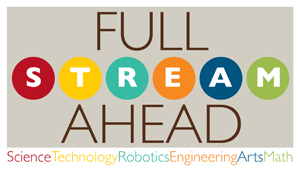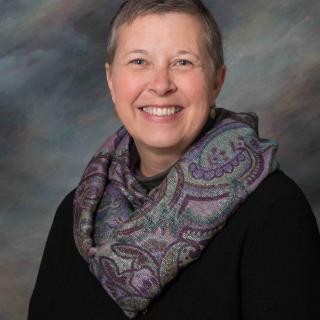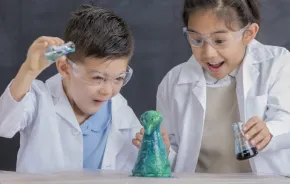
Her name was LaToya and she wanted to be a veterinarian. An African-American high school student from northern Virginia, LaToya loved science but didn’t always feel welcome in a world where her teacher was white, the pictures in her textbook were of white scientists and most of the kids in her class were white. “Sometimes, I don’t feel like I belong in science,” she wrote in a survey conducted by Sandra Hanson, Ph.D.
Hanson is a professor of sociology at The Catholic University of America in Washington, D.C. She’s also the author of Swimming Against the Tide: African-American Girls and Science Education. In her 2009 survey, Hanson wanted to learn what young African-American girls thought of science and discrimination in the science classroom.
The results: Those African-American students were more oriented toward science occupations than their white counterparts, but only 66 percent actually felt welcome in science (compared to 80 percent of surveyed white female students). Hanson also found that young African-American female students were more likely than white female students to see race as a formidable barrier in science.
That’s not much of a surprise, looking at similar stats. Nearly half of all science and engineering occupations are held by white men, according to the National Science Foundation. Compare that with the 18 percent of white women, 4 percent of Hispanic men, 3 percent of black men, 2 percent of Hispanic women and 2 percent of black women who hold similar positions. STEM, the numbers tell us, is a white man’s game, filled with white men in white lab coats.
It’s been said a million times: Our increasingly globalized world is complex and dependent on science and technology. To stay competitive, innovation is key, and it’ll take more than white men to fill the increasing number of STEM jobs. “Diversity in science makes better science,” says Hanson.
Experts agree: The success of a scientific team depends not just on the team’s expertise, but on its members’ collective backgrounds and knowledge. “Two heads can be better than one only if their contents differ. For that reason, our future challenges demand able and diverse minds,” writes Scott E. Page, a professor of complex systems, political science and economics at the University of Michigan and an external faculty member at the Santa Fe Institute.
Unfortunately, gaps in science achievement start early, even before kindergarten, says Paul Morgan, a professor of education at Pennsylvania State University. In his work, Morgan explores how a child’s earliest science learning is often the result of what the child sees or experiences, including what parents share through even the simplest of conversations.
What makes the car drive? What happens when we drop this ball? These are the kinds of general knowledge questions that fuel early learning. They’re also strongly predictive of how a child will do later in science because questions about general knowledge often touch upon math, reading and other social observations or learning, says Morgan.
In a 2014 study from George Mason University in Virginia, 65.5 percent of surveyed students said science experiences with a family member or a childhood activity piqued their initial interest in science. Leyla Ibrahim isn’t surprised.
 A senior at the University of Washington (UW) studying human-centered design and engineering, Ibrahim is vice president of the UW’s chapter of the National Society of Black Engineers. Her older sister is also an engineering student. “Just seeing her and knowing someone so close to me is able to indulge herself in a male-dominated field proved to me that I could do it as well,” Ibrahim says.
A senior at the University of Washington (UW) studying human-centered design and engineering, Ibrahim is vice president of the UW’s chapter of the National Society of Black Engineers. Her older sister is also an engineering student. “Just seeing her and knowing someone so close to me is able to indulge herself in a male-dominated field proved to me that I could do it as well,” Ibrahim says.
Irving Pressley McPhail, Ph.D., president and CEO of the National Action Council for Minorities in Engineering (NACME), knows what it’s like to have a mentor. He came to NACME in 2007 at the behest of his mentor, John Brooks Fuller, Ph.D., the first African-American director of the National Science Foundation. According to McPhail, working with Fuller gave him “the chance to use my science background in the world of engineering.”
Getting support from family is key, too, says McPhail. Parents don’t have to be experts at science to teach their kids about it; rather, “they need to know to take an interest and the time to get their children engaged in school and connected to the right resources.”
But nonwhite families are the most likely to lack just those kinds of resources in the United States. According to 2014 Kids Count report from the Annie E. Casey Foundation, “Latino children are the least likely to live in a household where someone has at least a high school diploma (26 percent below the national average),” while African-American children are “significantly less likely to live in two-parent families (46 percent below the national average).” Both are proven factors that influence whether or not a child finishes high school or goes to college — necessities for STEM jobs.
Poverty also plays a part in keeping nonwhite kids out of STEM. Sixty-five percent of African-American children and 65 percent of Hispanic children live in low-income families in the U.S., according to 2013 data from the National Center for Children in Poverty.
Beyond limiting a child’s options at home, poverty influences a child’s quality of education. A state’s funding of public schools is largely based on the taxes paid by local residents; poorer areas have less money to contribute to their local schools. This isn’t an isolated problem. In 2014–2015, nearly a quarter of U.S. public school students attended “high poverty schools,” which means that more than 75 percent of students were eligible for free or reduced lunches at those schools.
Disparities in funding plus life lived in high poverty creates a “double disadvantage” for students, according to a February 2017 study conducted by the Education Law Center and Graduate School of Education at Rutgers University. The study identified the country’s “most fiscally disadvantaged” school districts. These were districts with higher-than-average student needs and lower-than-average resources. The schools often had high teacher-to-student ratios, noncompetitive teacher wages and limited access to early childhood education — all of which hurt student success.
A lack of racial and ethnic role models in science, science textbooks and other materials may cause students to feel like science is for their white peers.
One of the country’s most fiscally disadvantaged large urban districts is Chicago. With an enrollment of 396,641 students, the City of Chicago School District 299 far exceeded the enrollment of many of the other districts on the list of fiscally disadvantaged school districts. And the student body? Predominately Hispanic (46.1 percent) and African-American (38.9 percent).
Of course, there are millions of children of color who don’t live in poverty or improvised school districts. However, they still face hurdles to STEM that their white peers will likely never face. Science achievement gaps can be the fault of biases or stereotypes, according to the Annual Review of Sociology’s literature review on STEM education.
These biases may also result in teachers having lower expectations for minority students in comparison to those they have for white peers, says Chris Curran, assistant professor of Public Policy at the University of Maryland, Baltimore County. A lack of racial and ethnic role models in science, science textbooks and other materials may cause students to feel like science is for their white peers. Minority students who are aware of these stereotypes and biases could actually score lower on an achievement test, says Curran.
Compounding these issues is a lack of role models in science together with classroom materials, such as textbooks, that may make students of color feel like science is “for” their white peers. In June 2012, Carlos Rodriguez, principal research scientist at the American Institutes for Research, told U.S. News & World Report that a lack of role models within minority students’ own families is another major obstacle the students face in graduating from high school and advancing to higher education.
STEM — already a traditionally male-dominated space — has even lower numbers of minority women. Only 2 percent of African-American women and 2 percent of Hispanic women work in science and engineering, compared to 18 percent of white women.
Sapna Cheryan, Ph.D., wanted to know the reasons behind those differing numbers. An associate professor of psychology at the UW, Cheryan cowrote the January 2017 study “Why Are Some STEM Fields More Gender-balanced Than Others?” She identified three factors that determine what branch of STEM (biology, chemistry, computer science, etc.) a woman enters.
First, masculine culture within a given field can signal that women don’t belong in that field. Second, a lack of early learning experiences. Third, self-efficacy, or the belief that one can be successful in a given field. “Women [typically] tend to underestimate how well they will do, and men tend to overestimate,” Cheryan explains.
Here’s the rub: That wasn’t as true of African-American and Hispanic women. They shared similar self-efficacy values as white men. The difference was that African-American girls and women who expressed more confidence that they would exceed in math were recommended less often by their teachers for honors or advanced courses as compared to their white male peers. Self-confidence simply was not enough to encourage them in STEM when facing factors like discrimination and inadequate academic opportunities.
One thing that might help: more mentoring. “Science really depends on networking,” says Hanson. Early mentoring programs can help bridge that gap and build networks, she says.
If the hope of STEM is to nurture innovation, doesn’t it make sense that more voices are heard? Yes, says Page. If we diversify STEM, we change the questions that scientists ask and the ways that we go about solving problems. “Education, experiences and identity all play a role in how we think,” says Page. Maybe acknowledging that is our first step.
Many organizations are turning to NACME, which gives scholarships to and builds partnerships between K–12 students, community colleges and universities. Diversity and inclusion have become part of his mission at NACME, says Pressley. “[What drives me] is to be able to move young people into greater levels of accomplishment,” he says.
Locally, Million Women Mentors has created a Washington state chapter with a goal of recruiting 1,500 men and women as mentors for young women interested in STEM. With partners like Pacific Northwest Labs and STEMconnector, Million Women Mentors has recently sponsored STEM events for grades 1–8.
Jillian Cadwell, Ph.D., is one of the leaders of the local chapter of Million Women Mentors. She's also the STEM outreach consultant for the Office of Academic Affairs and a professor of environmental engineering at Washington State University, Tri-Cities.
Mentoring shows girls that there is someone else like them who can become a professor, a teacher or an executive in STEM, says Cadwell.
“I want to empower girls,” Cadwell says. “[I want to empower them] so they can make a difference while also knowing that they can make a living wage and have a family.”











